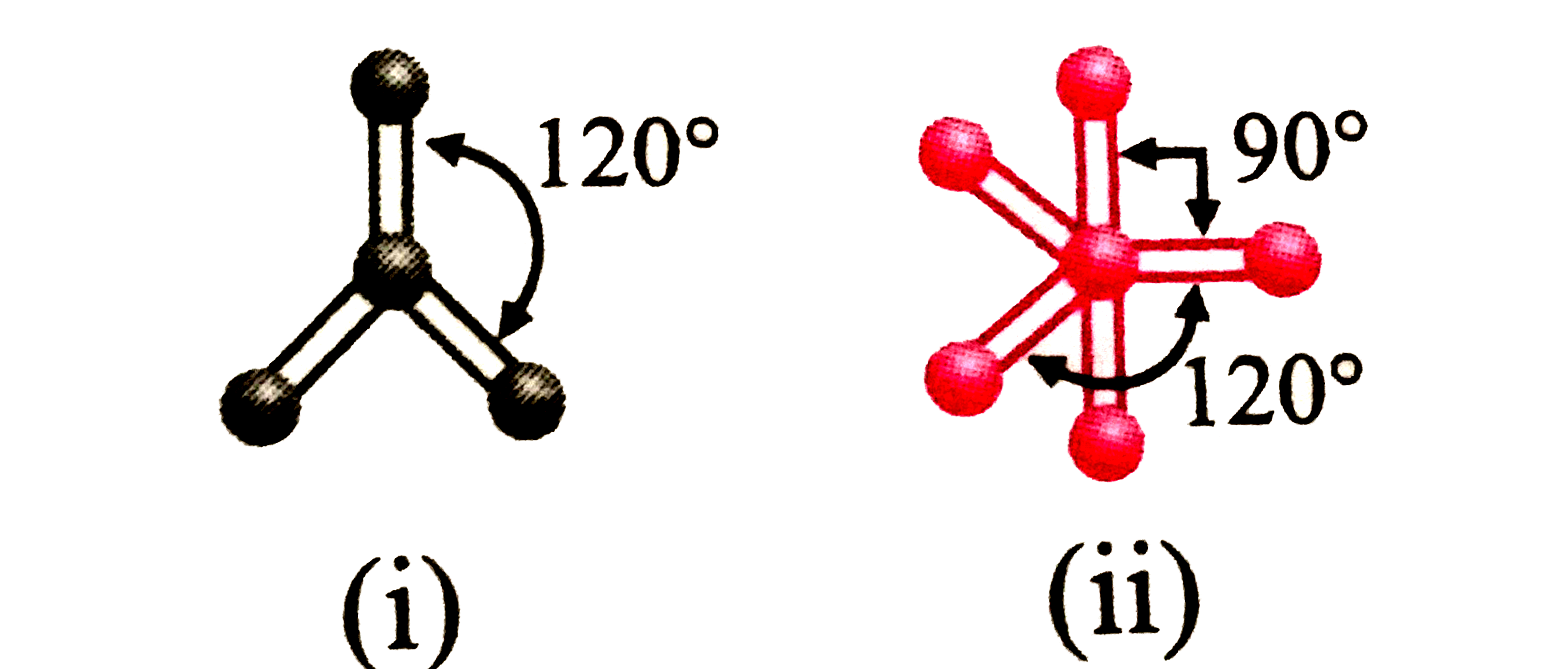The bond lengths and bond angles in the molecules
of methane , ammonia and water are given below
(##MRV_CHE_MCQ_XI_C05_E01_233_Q01.png" width="80%">
This variation in bond angle is a result of
1. The increasing repulsion between hydrogen
atoms as the bonds length drecrease.
2. The number of non-bonding electron pairs in the molecule .
3. A non-bonding electron pair having a greater
repulsive force than a bonding electron pair .
A
1,2 and 3 are correct
B
1, and 2 only are correct
C
2 and 3 only are correct
D
1 only is correct
Text Solution
The correct Answer is:c
Smaller the bond length , closer are the H-atoms ,
greter is the repulsion between them the hence
greater is the bond angle . Hence (1) is wrong . C has
no lone pair , N has one lone pair , O has two lone
pairs . Gteater the number of lone pairs , greater is
the repulsion on bond pairs and hence smaller is the
bond angle . Hence (2) and (3) are corret .
|
Topper's Solved these Questions
- NATURE OF CHEMICAL BOND BOOK - MARVEL PUBLICATIONCHAPTER - NATURE OF CHEMICAL BOND EXERCISE - TEST YOUR GRASP
50 Videos
- BASIC PRINCIPLES AND TECHNIQUES IN ORGANIC CHEMISTRYBOOK - MARVEL PUBLICATIONCHAPTER - BASIC PRINCIPLES AND TECHNIQUES IN ORGANIC CHEMISTRYEXERCISE - Test your grasp
40 Videos
- REDOX REACTIONS BOOK - MARVEL PUBLICATIONCHAPTER - REDOX REACTIONS EXERCISE - TEST YOUR GRASP
21 Videos
Similar Questions
Knowledge Check
The bond lengths and bond angles in the molecules of methane, ammonia, and water are given below:

This variation in bond angle is a result of
(i) the increasing repulsion between H atoms as the bond length decreases
(ii) the number of nonbonding electron pairs in the molecule
(iii) a nonbonding electron pair having a greater repulsive force than a bonding electron pairA(i), (ii), and (iii) are correctB(i) and (ii) are correctC(ii) and (iii) are correctDonly (i) is correctThe bond length and bond angles in molecules in the solid state are calculated by:
AX-ray diffraction techniqueBneutrons bombardmentCprotons bombardmentDnone of theseWhich molecule is depicted by the given ball and stick models ?
 A(i)BeCl2,(ii)CH4B(i) BF3,(ii)PCl5C(i)BF4,(ii)CH4D(i)BeCl2,(ii)PCl5
A(i)BeCl2,(ii)CH4B(i) BF3,(ii)PCl5C(i)BF4,(ii)CH4D(i)BeCl2,(ii)PCl5
A sigma-bonded molecule MX3 is T-shaped. The number of non-bonding pairs of electrons is
View SolutionA sigma bonded molecule MX3 is T-shaped The number of non-bonding pairs of electrons is .
View SolutionMatch the bond enthalpics given in column II with
the molecular given in column I and mark the appropriate choice .
(##MRV_CHE_MCQ_XI_C05_E01_270_Q01.png" width="80%">
View SolutionThe bond length between C- C bonds in sp2 hybridised molecule is
View SolutionA sigma bonded molecule MX3 is T-shaped The number of non-bonding pairs of electrons is .
View Solution
